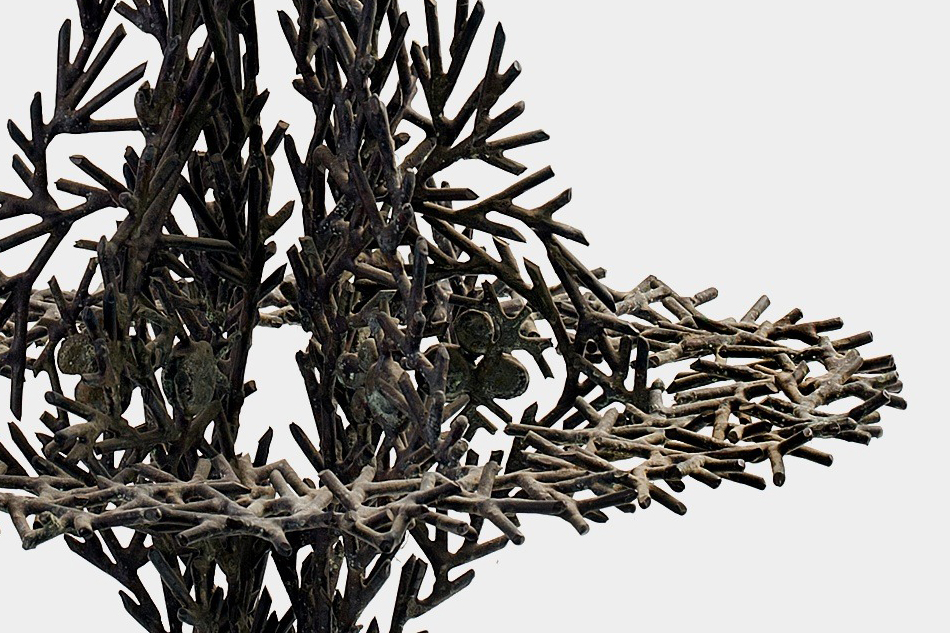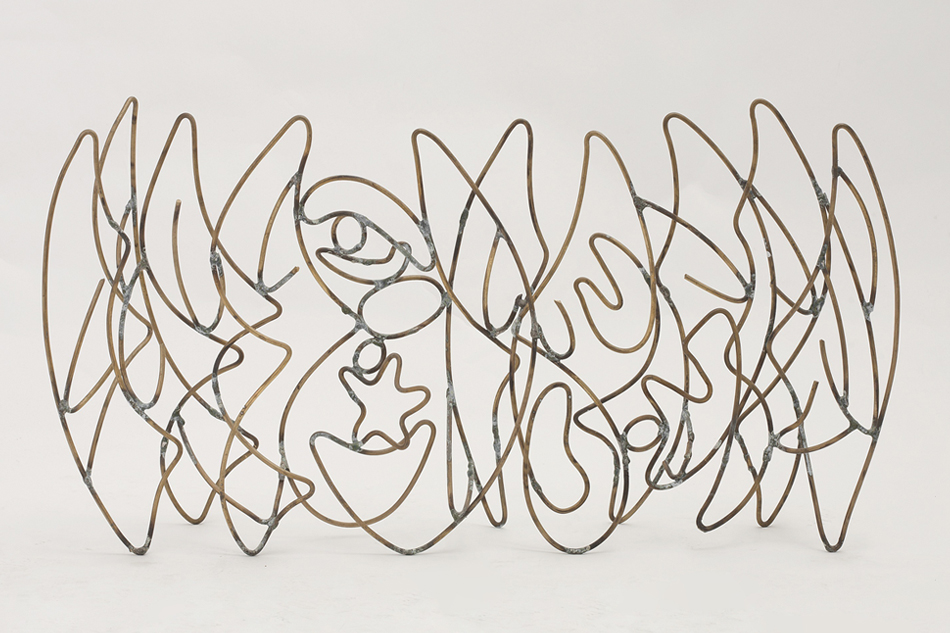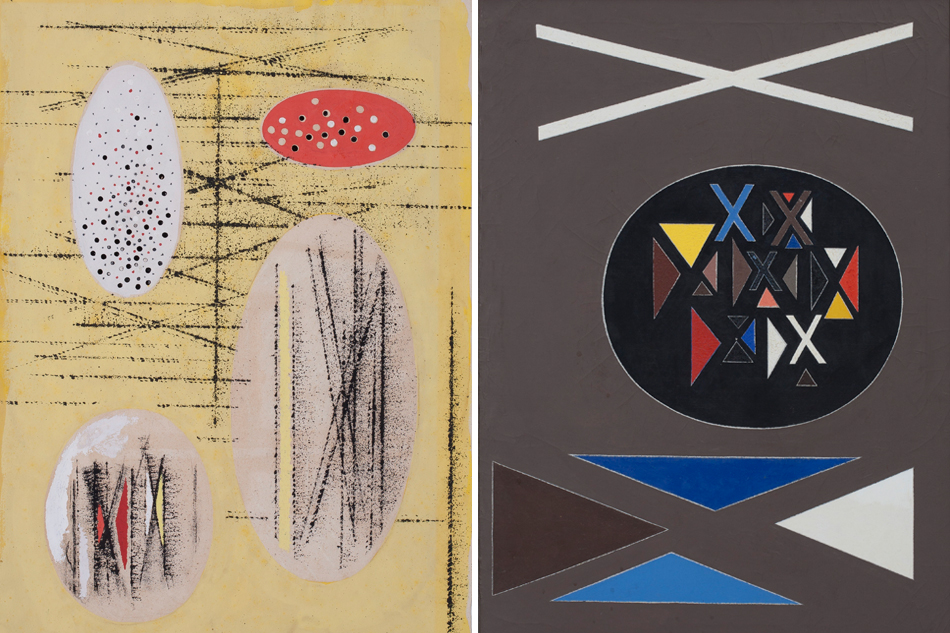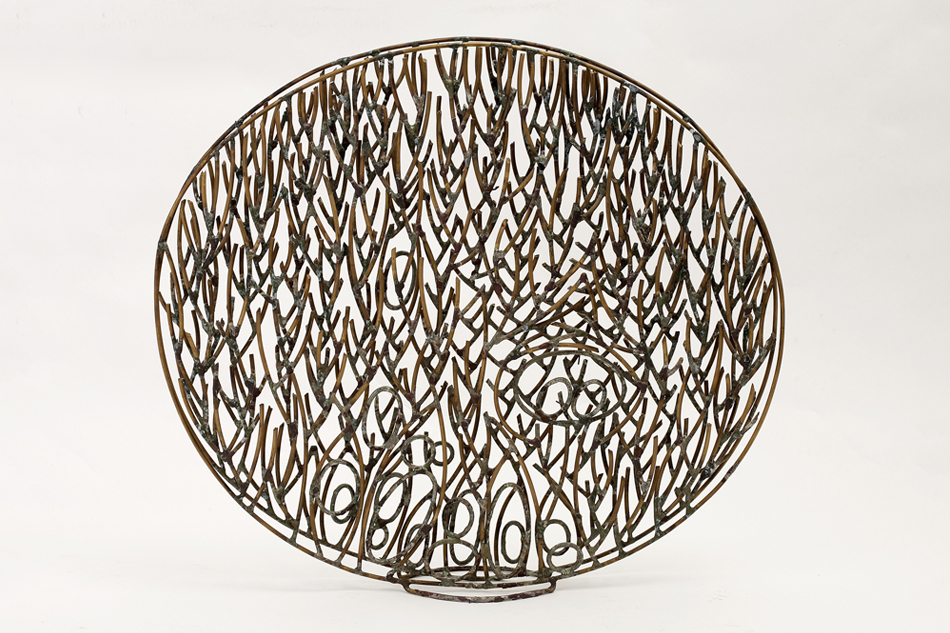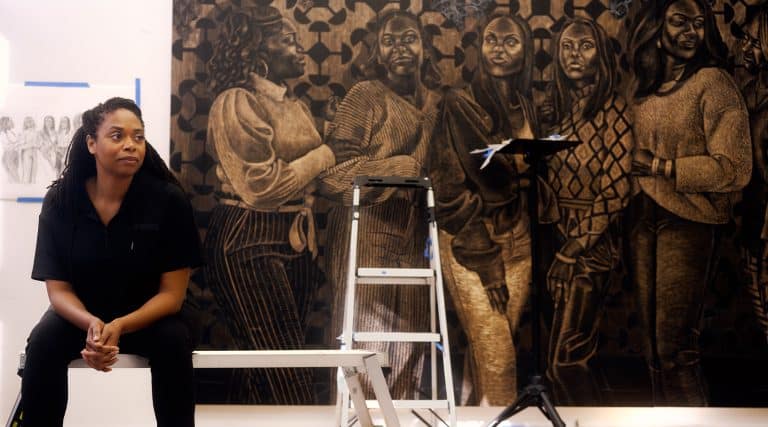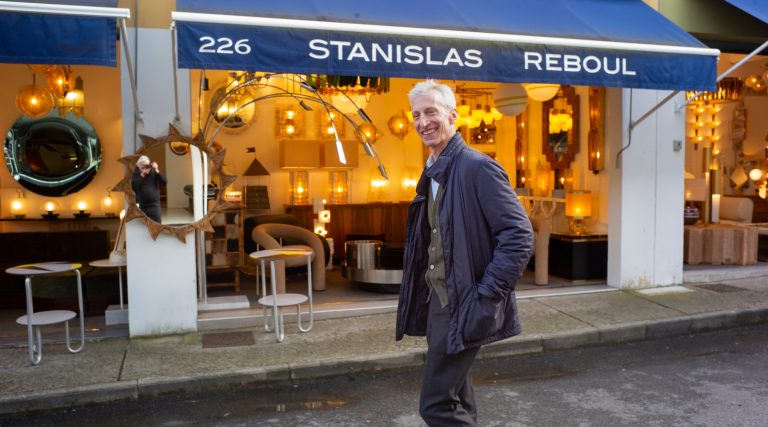
October 2, 2013Three Waves, 1960, is one of a handful of botanically inspired metal sculptures by Richard Filipowski featured at Hostler Burrows, in New York, and available on 1stdibs. Top: Particle Red, 1948
One of the best things about the field of mid-century design is that there are still great discoveries to be made of virtually unknown talents. Take, for example, Richard Filipowski. Although he created striking furniture, sculptures and paintings and ran with some of the most prestigious names in the American design world of the 1940s and ’50s — László Moholy-Nagy taught him at the New Bauhaus, in Chicago, and Walter Gropius invited him to teach at the Harvard Graduate School of Design — Filipowski (1923–2008) flew under the radar for decades. While a few exhibitions of his work have been organized in Boston, where he taught visual design in the architecture department at MIT for 36 years, Filipowski makes his New York debut on October 2, at Hostler Burrows’s East 10th Street space. A collaboration between the downtown gallery and dealer Lawrence Weinberg, of Weinberg Modern, the show includes more than 30 examples of Filipowski’s crisp abstract paintings and elaborate, naturalistic metal sculptures, which have been quietly kept in the artist’s estate for the past few decades. Concurrently the pieces may be bought online exclusively through a 1stdibs capsule collection.
According to Weinberg, Filipowski’s oeuvre is unknown because he never tried to promote his work. “He taught during the day and that was that,” says the dealer, who has conducted extensive research on the artist. “He’d come home and work obsessively in his basement at night. And he never sought out someone like Florence Knoll to promote or produce his furniture designs.”
“Although decorative in their metalwork, the botanical forms are flat and linear and reveal a link to illustration and graphic design.”

Untitled, ca. 1970
In 1992, Weinberg stumbled across a photograph of a sideboard by Filipowski in a mid-century Italian journal, and he was immediately inspired to track down more work. He eventually connected with the artist’s brother, George, who has kept the estate intact. Weinberg presented the work to his colleagues Kim Hostler and Juliet Burrows, and they were awestruck. “We had this really strong physical reaction to the pieces,” Hostler says. “We looked at each other and just knew that they were something special.”
The metal sculptures, which largely consist of hundreds of leaf- or stick-like forms soldered together, are intricate, dense and clearly labor-intensive, resembling anything from branches to sprouting leaves to coral. Although decorative in their metalwork, the botanical forms are linear, and they reveal a link to illustration and graphic design. Filipowski’s abstract paintings, meanwhile — full of circles, ovals, planes, crisscrossing lines and clusters of dots — are equally delicate and graphic, suggesting a thinker intrigued by the atomic age, as well as the constructivism of Moholoy-Nagy, notes Weinberg. (Filipowski studied physics as well as architecture.) “The paintings are bold in their colors and dynamic, but also so precise. They make me think of beautiful science experiments,” says Burrows.

Polish Grand Union, 1960-65
For Hostler Burrows, the show of the Polish-born American artist-designer represents a departure from the Scandinavian work that has been the gallery’s focus for 15 years. “We’ve been playing with the idea of opening up to a more well-rounded program, and showing American fine art as well,” says Hostler. Filipowski is not entirely unrelated to the Nordic work that they have championed, however. “A lot of the artists we most love from Scandinavia were also very much moved by nature,” says Burrows.
According to Weinberg, Filipowski was deeply influenced by the Old Testament, even though he was not Jewish. He created several large-scale sculptures for temples (and one church), and his metalwork has a mystical quality that fits curiously well with its connection to physics. Some have a sprawling, almost cosmic affect, while others summon a “fairytale forest,” says Burrows. “These are not tabletop sculptures. They have a real presence, and there is something to discover within and behind them. We want to install them so you wind your way through and get a sense of that.”
For Filipowski, art and design were clearly a way of articulating something about the nature of existence, and it’s easy to imagine him lost in his laborious process, creating his work without any concern for an audience.

